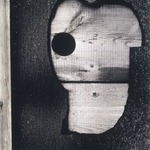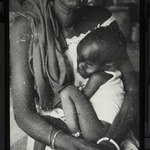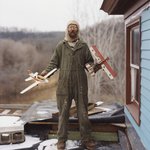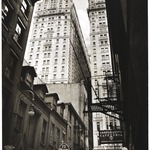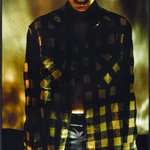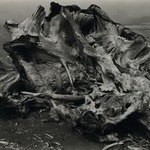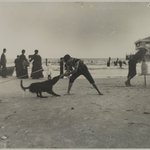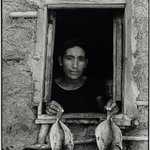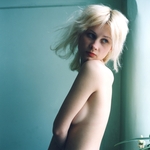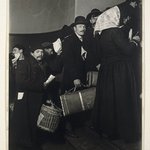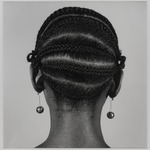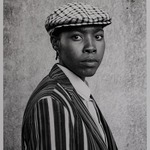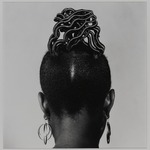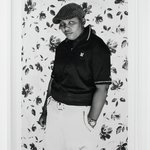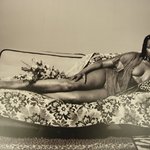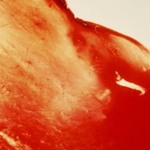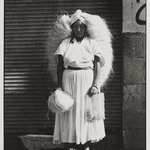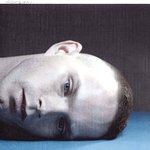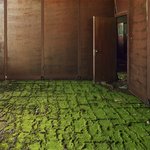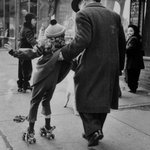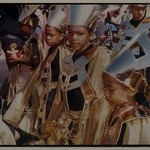Collection: Photography
HIGHLIGHTS
FULL COLLECTION
COLLECTION HISTORY
The Brooklyn Institute of Arts and Sciences, the parent organization of the Brooklyn Museum, formed the first school of photography in the United States in 1889. Clarence White, the founder of the Photo-Secession movement, which promoted photography as an art form, served as one of the chief instructors at that time, and annual photography exhibitions were held for over sixty years, beginning in 1891. Although no formal curatorial department of photography was established, the Brooklyn Museum began to acquire photographs out of these exhibitions in 1899.
A wide variety of exhibitions took place during the early decades, among them many shows of Pictorialist photography. The Museum also held prominent exhibitions of major contemporary figures in photography, most notably International Photographers in 1932, with artists such as Walker Evans, André Kertesz, Lee Miller, Tina Modotti, Lázló Moholy-Nagy, Paul Outerbridge, Man Ray, and Charles Sheeler. Three or four photography exhibitions took place at the Museum every year, including presentations devoted to Gertrude Käsebier (1929), Arnold Newman (1942), and Ilse Bing (1948).
Collecting during this period was under the guidance of Herman de Wetter, a curator at the Museum from 1934 until 1948, when his former assistant Anthony Caruso succeeded him. They emphasized the work of the late Pictorialists, such as Adolf Fassbender, D. J. Ruzicka, and Max Thorek. A few notable exceptions included acquisitions by Margaret Bourke-White, Youssef Karsh, Gjon Milli, Arnold Newman, Edward Steichen, and Edward Weston, and a full set of Berenice Abbott’s Changing New York.
When Caruso resigned in 1955, the Museum administration decided to disperse the photography collection, which at that stage included a large number of glass plate negatives from the late nineteenth and early twentieth centuries. This rich historical resource, with significant views from early Brooklyn and Manhattan by photographers such as George Brainerd and Breading Way, was sent to the Brooklyn Public Library, while other material went into storage. Fortunately, the Museum was eventually able to reacquire the collection of glass plate negatives in 1993.
The collecting of photography resumed in 1974, under the leadership of Barbara Head Millstein, who remained in charge of building the collection until her retirement in 2003. Apart from a selection of European works and substantial holdings of nineteenth-century travel photography, attention focused mostly on twentieth-century American imagery, with acquisitions of large groups of works by, for example, Harry Callahan, Larry Clark, Lewis Wickes Hine, Consuelo Kanaga, Danny Lyon, Stephen Shore, and Aaron Siskind.
Moreover, the collection also now features representative and often important works by, for instance, Rudy Burckhardt, Helen Levitt, and Edward Weston. In addition, the Museum holds a significant collection of important Latin American photographers, including Manuel Alvarez Bravo and more contemporary photographers such as Graciela Iturbide and Herminia Dosal. While focusing mainly on the type of documentary images that could be described as street photography, the collection represents all genres of work, including abstraction, portraits, landscapes, and, to a lesser degree, conceptual photography.
Today the collection also includes good examples of photographic work by noteworthy contemporary artists such as Gordon Matta-Clark, Cindy Sherman, and Lorna Simpson, and acquisitions of contemporary photography have increased significantly over the last decade with works entering the collection by artists such as Edward Burtynsky, Anthony Goicolea, Loretta Lux, and Vik Muniz. Over the last few years, especially, the Museum has acquired a great number of photographs that reflect the institution’s broad scope and its commitment to engage diverse communities.
The photography collection came under the aegis of the Museum’s Department of Prints, Drawings, and Photographs in 1993. Currently, the curator of photography works closely with the Museum’s curator of contemporary art.
A wide variety of exhibitions took place during the early decades, among them many shows of Pictorialist photography. The Museum also held prominent exhibitions of major contemporary figures in photography, most notably International Photographers in 1932, with artists such as Walker Evans, André Kertesz, Lee Miller, Tina Modotti, Lázló Moholy-Nagy, Paul Outerbridge, Man Ray, and Charles Sheeler. Three or four photography exhibitions took place at the Museum every year, including presentations devoted to Gertrude Käsebier (1929), Arnold Newman (1942), and Ilse Bing (1948).
Collecting during this period was under the guidance of Herman de Wetter, a curator at the Museum from 1934 until 1948, when his former assistant Anthony Caruso succeeded him. They emphasized the work of the late Pictorialists, such as Adolf Fassbender, D. J. Ruzicka, and Max Thorek. A few notable exceptions included acquisitions by Margaret Bourke-White, Youssef Karsh, Gjon Milli, Arnold Newman, Edward Steichen, and Edward Weston, and a full set of Berenice Abbott’s Changing New York.
When Caruso resigned in 1955, the Museum administration decided to disperse the photography collection, which at that stage included a large number of glass plate negatives from the late nineteenth and early twentieth centuries. This rich historical resource, with significant views from early Brooklyn and Manhattan by photographers such as George Brainerd and Breading Way, was sent to the Brooklyn Public Library, while other material went into storage. Fortunately, the Museum was eventually able to reacquire the collection of glass plate negatives in 1993.
The collecting of photography resumed in 1974, under the leadership of Barbara Head Millstein, who remained in charge of building the collection until her retirement in 2003. Apart from a selection of European works and substantial holdings of nineteenth-century travel photography, attention focused mostly on twentieth-century American imagery, with acquisitions of large groups of works by, for example, Harry Callahan, Larry Clark, Lewis Wickes Hine, Consuelo Kanaga, Danny Lyon, Stephen Shore, and Aaron Siskind.
Moreover, the collection also now features representative and often important works by, for instance, Rudy Burckhardt, Helen Levitt, and Edward Weston. In addition, the Museum holds a significant collection of important Latin American photographers, including Manuel Alvarez Bravo and more contemporary photographers such as Graciela Iturbide and Herminia Dosal. While focusing mainly on the type of documentary images that could be described as street photography, the collection represents all genres of work, including abstraction, portraits, landscapes, and, to a lesser degree, conceptual photography.
Today the collection also includes good examples of photographic work by noteworthy contemporary artists such as Gordon Matta-Clark, Cindy Sherman, and Lorna Simpson, and acquisitions of contemporary photography have increased significantly over the last decade with works entering the collection by artists such as Edward Burtynsky, Anthony Goicolea, Loretta Lux, and Vik Muniz. Over the last few years, especially, the Museum has acquired a great number of photographs that reflect the institution’s broad scope and its commitment to engage diverse communities.
The photography collection came under the aegis of the Museum’s Department of Prints, Drawings, and Photographs in 1993. Currently, the curator of photography works closely with the Museum’s curator of contemporary art.
